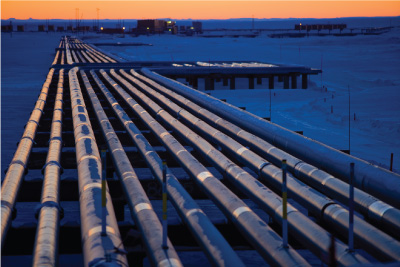CO₂ Transport

Pipeline infrastructure, Alaska, USA.
Image courtesy of BP
Captured CO₂ has to be compressed and transported, most likely by pipeline, to a site suitable for storage. Ships may be viable for CO₂ transportation over long distances. Even if a suitable storage site lies directly beneath the source of capture, the captured CO₂ will have to be compressed and pumped underground. Pipelining of gases and liquids is widespread throughout the world, and includes millions of tonnes of CO₂ that are transported each year for use in Enhanced Oil Recovery (EOR) operations and in emerging CCS projects. Pipeline infrastructure can be costly, but heavy industries are often ‘clustered’ together which allow CO₂ pipeline networks to be shared. Visit the CCS Browser for more information on how CO₂ is transported.
Learn more about CO₂ capture and storage by visiting www.ccsbrowser.com
Final results book available.
View...
A summary of 20 years of CCP - as shown at GHGT-15. View...
Publication Downloads on CO₂ Capture
Background Information on CO₂ Capture
FAQs on CO₂ Capture
CCP Activities on CO₂ Capture
Publication Downloads on storage, monitoring and verification (SMV)
Background Information on storage, monitoring and verification (SMV)
FAQs on storage, monitoring and verification (SMV)
CCP Activities on storage, monitoring and verification (SMV)
Publication Downloads on policies and economics
FAQs on policies and economics
CCP Activities on policies and economics
